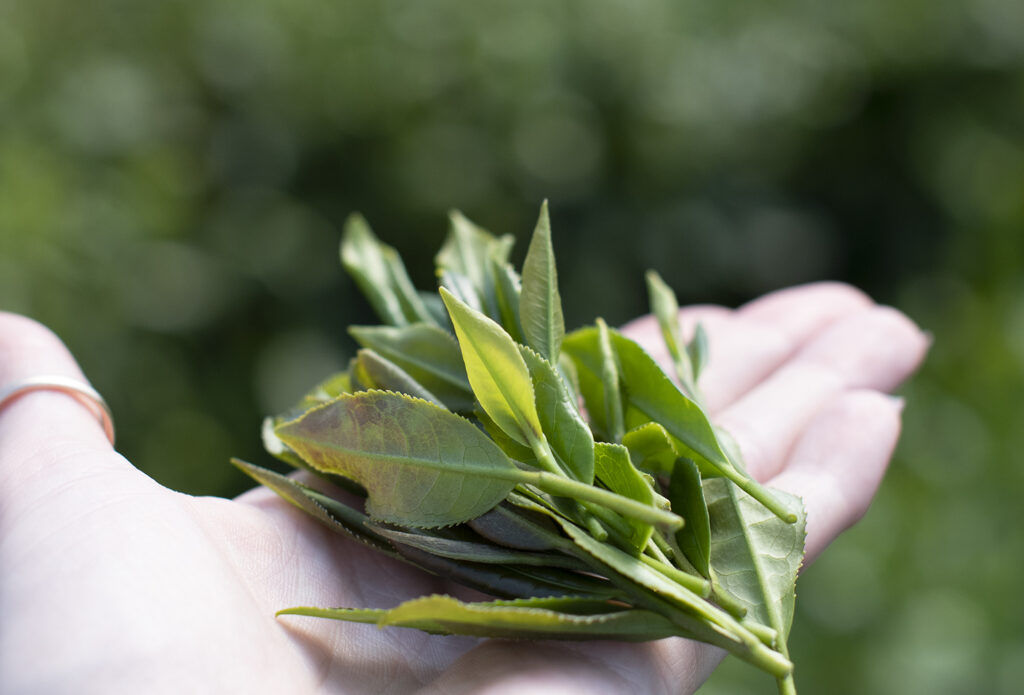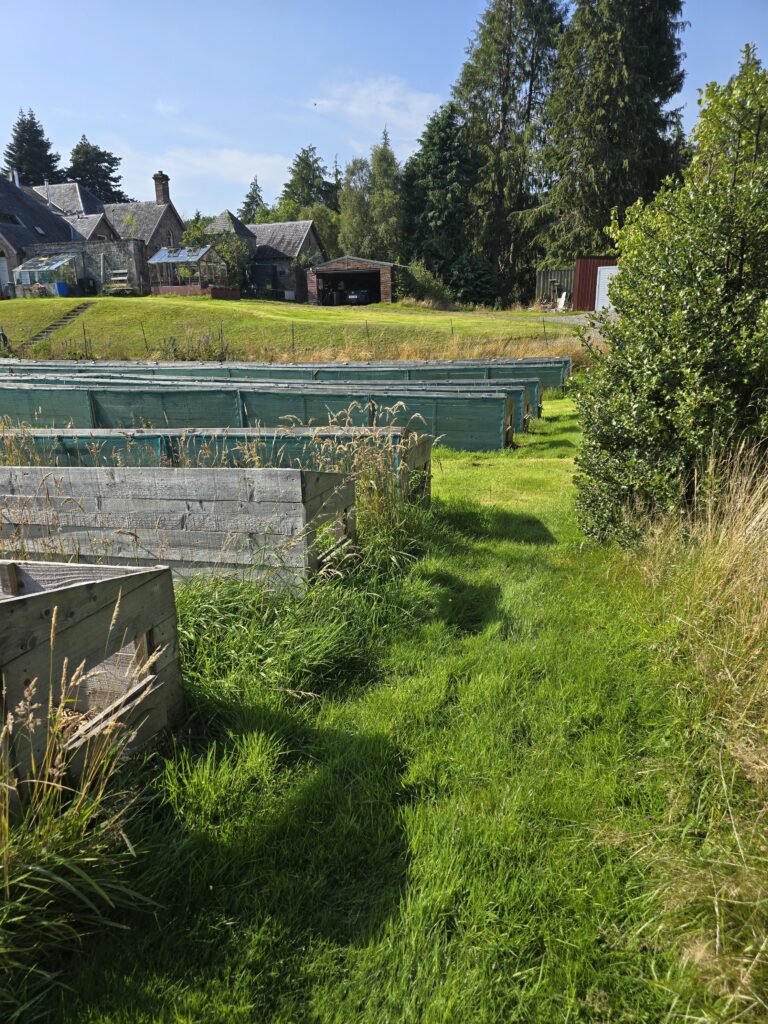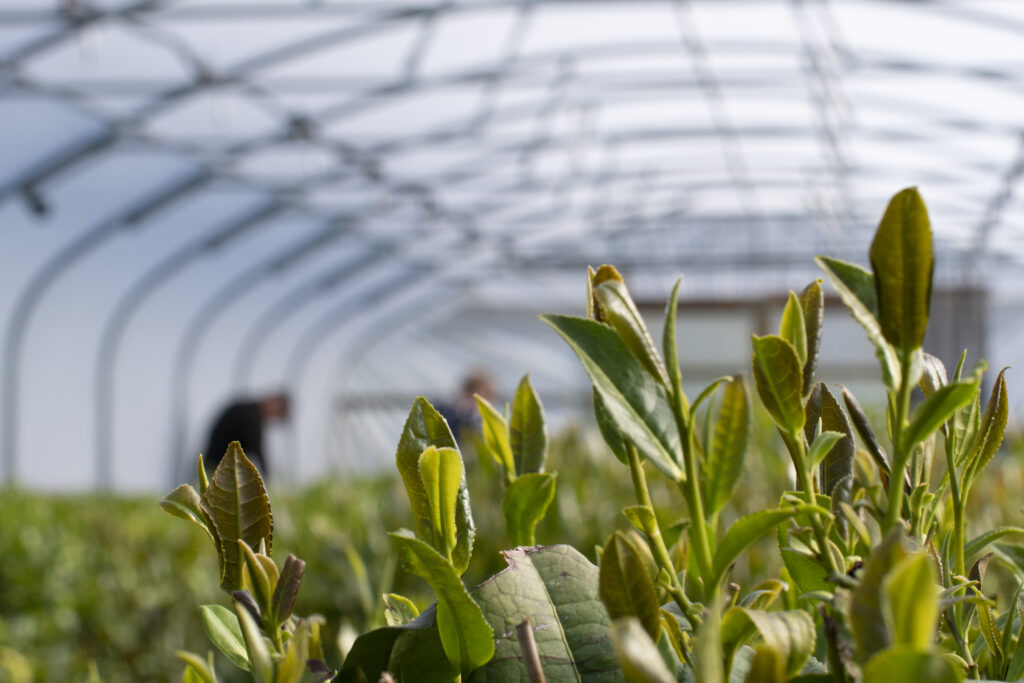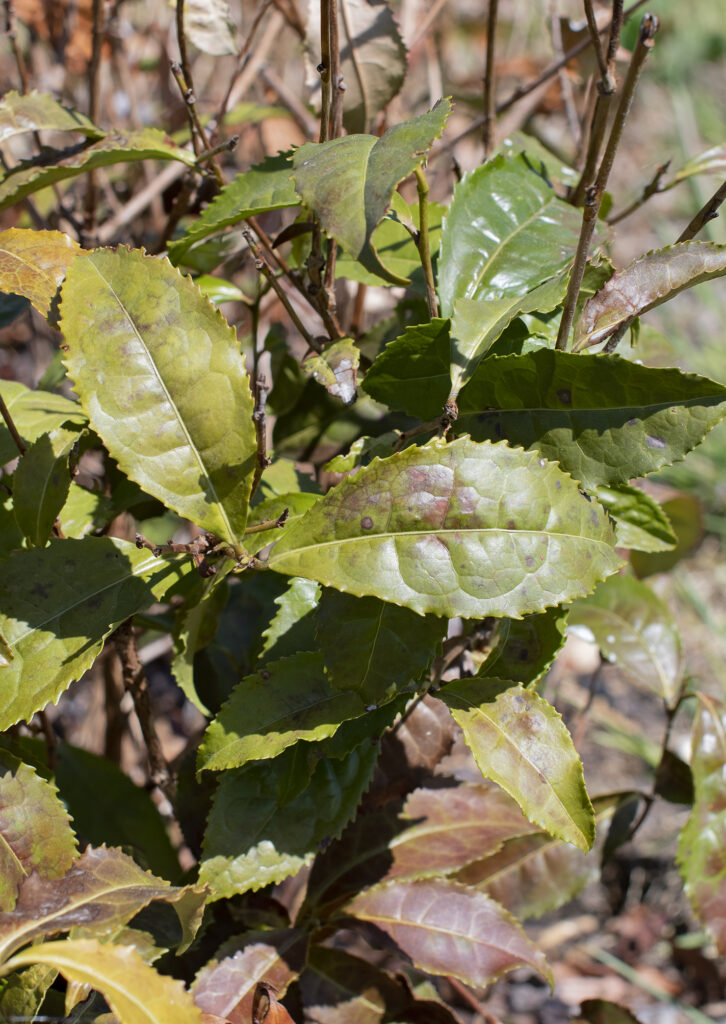
Meet Donald and Sue, the caretakers of Guisachan Farm.
It was a long journey for Donald and sue to ensure their tea plants were happy to produce enough to consider selling commercially.
In 2024 for example the first flush was only 320g total, oh yes we are talking very small batch production.


Up in Tomich, Guisachan Farm, they experience very late frosts. This means only the tea plants in polytunnel are protected enough to ensure the delicate young buds can be harvested.
Donald did start with simply planting the Camellia Sinensis (tea) plants in the ground. It was quickly obvious that these were being battered by the Scottish winds, so to solve this issue Donald built a wonderful long shed structure to shelter the tea plants.
This wasn’t quite enough, so the next step was to create coverings which can pull over the plants, there’s little trap doors along the sides which can open and close to accommodate airflow. Sadly this was still not enough to protect from the frosts, even though it did solve the wind damage issues. It can get quite blustery at Guisachan sometimes!
In 2021 it turned into make or break for the Guisachan tea plants, the wee long sheds were not offering protection from the frosts to allow the tea plants to flourish.
Ever resourceful, Donald opted to introduce the polytunnel. This has been a game changer, constructed in 2021, currently 4 years ago, the plants have gone from strength to strength.
Camellia Sinensis planted in rows in the Highlands of Scotland. This polytunnel not only offers protection from wind, it also allows for airflow as the doors can be opened and sides rolled up and also helps keep the humidity high. Camellia Sinensis (tea) plants love humid environments, but often in Scotland it just rains (which is I suppose the epitome of extreme humidity) but they thrive in warm humidity. In the Scottish Highlands, warm humid days are few and far between. Thankfully when we get late frosts, the polytunnel helps to ensure that the temperature is kept high enough so that the tender little shoots (the bits that are used for making tea) are protected.

If the Scottish tea plants are exposed to freezing temperatures for too long after the leaves start growing (also referred to as flushing) they turn black and fall off. Tiny, darkened buds are not the sight you wish to be greeted with in the morning, as it’s a sad day when your tea is lying on the ground, this very effectively puts a halt on any tea harvest plans.
Guisachan Estate is nestled a little higher than the village of Tomich, during my visits I feel it to be somewhat of a microclimate which means that they get really warm summers (and dryer than Inverness). On the other side of this cold, they often get later frost and even snow they are kind of like in a little dip in the hills.
It’s fascinating to see the tea plants planted outdoors in 2016 compared to the ones in the polytunnel. Even the mini shed dwellers outside suffer through the winter. Especially this winter in January 2025 we had freezing temperatures for a longer time than usual. You can see the frost damage from this is clearly visible. However these tea plants were grown from seed by Donald so they will have really long deep taproot and a strong healthy root system under the soil so they will come back. Chances they will grow fast enough to be able to harvest any leaf from them this year?
Time will tell, this is the most damage they’ve sustained over winter so far. They might be more hardy, they might end up more bushy.


Introducing the polytunnel was a big decision for Donald and Sue to make. The initial hope was that the Camellia Sinensis plants would just be happy stretching their leaves outside. It’s been a complete game changer for them because it ensures some environmental control , take for example the irrigation system installed, it’s much easier to get all that water to the plants in a sustained way.
This irrigation system in the roof also helps with keeping the humidity levels higher. This is a testament to the resourcefulness of Donald and Sue.
Yes, tea can indeed grow in the Scottish climate. In some areas these tea plants will not need as much protection, as you can also find microclimates more suited to tea. Take for example there are some areas around the Scottish West Coast which seem to be in a weather bubble of warmed climate which means tea is much happier there.
There are also some walled garden tea growers in Scotland. Growing Camellia Sinensis in such a sheltered space offers more protection from the elements which means the tea plants are able to thrive.
We can definitely grow in Scotland and this is a testament to people who have made this a reality.
We’re also doing some small scale tea experiments with a view to crafting other types of tea, at time of writing Donald produces black tea sole. If you would like to stay updated on any of these experiments join our tea mail family, where you will be first to hear about any new teas and tea news.